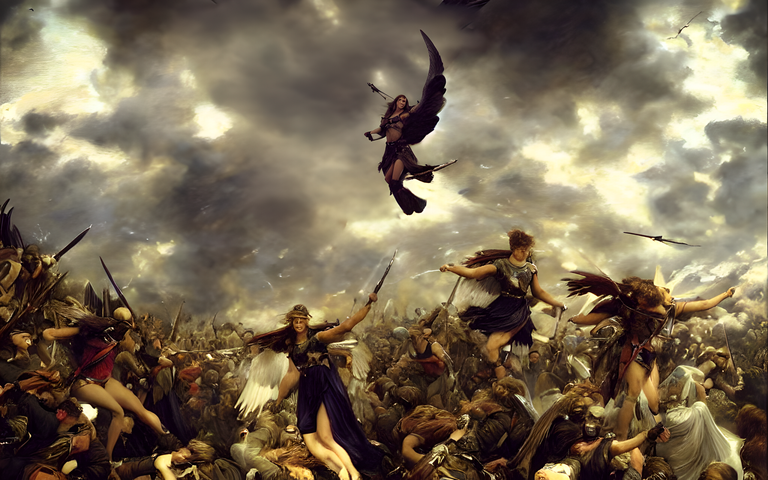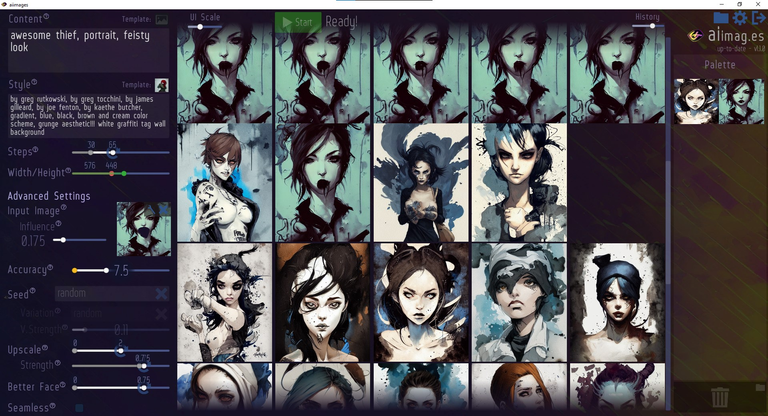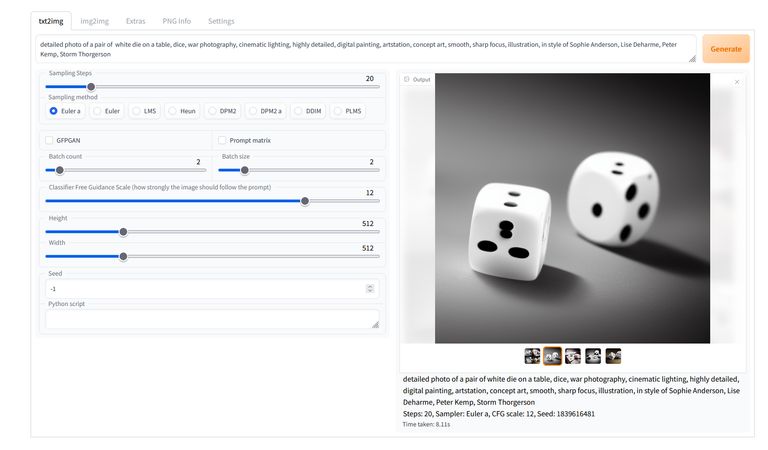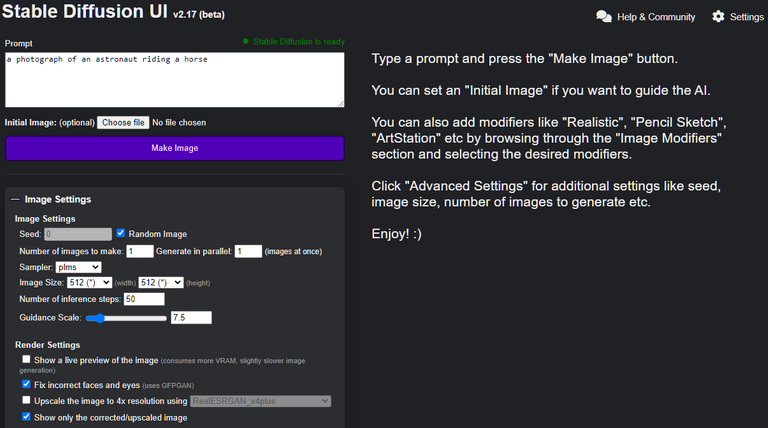Four ways to get started with generating your own AI art on your own PC

An image from a series I'm developing on Valkyries
If you're one of the 4.8 people who read my blog here, you'll know that recently, I've been generating and working on a bit of AI art.
My background is a Masters Degree in Visual Art and Design. As explained in that post, I want to make stories, and tell them; couple this with the fact that I am an all around computer lover and it marries perfectly into the AI Art movement.
I'm so pleased that I can be a part of it. But how can you make your own AI art?
An important note about this list - it is not an exhaustive and detailed study of all the options available to get Stable Diffusion working on your PC. There are hundreds of forks and modifications that are being actively developed by many developers and tinkerers. Some of this may be out of date very quickly, as the pace of development in this field is obnoxiously quick!
Here are five relatively easy methods. First, there's some things you will need:
- A Windows Computer with a nVidia Graphics Card
- The ability to read instructions!
- Some Inspiration and an Idea for a masterpiece of your own
Visions of Chaos

In its own words:
It is the most complete all in one application dealing with Chaos Theory and Machine Learning available. Every mode is written to give the best possible quality output. There are thousands of sample files included to give you an idea of what Visions of Chaos is capable of.
To get this software up and running for Text to Image and other Machine Learning modes, you need to follow a tutorial that instructs you how to set up your computer for Machine Learning. It is pretty blunt in its instructions.
Visions of Chaos is not for the feint of heart, and the options can appear to be completely overwhelming at first, but once you understand how the software works, you can take what you learn from the simpler solutions and take it to the next level within Visions of Chaos. It will expose you to a whole lot more beyond the simple "I want a picture of a pony piloting an army tank", to the world of computational and highly technical art.
Visions of Chaos makes the whole process very, very easy; exposing you to a world of carefully curated libraries of code and packaging them up into a consistent interface, to allow you to explore your creativity.
Be warned, however:

aiimage.es by Sunja

Website
Download (Scroll Down)
A simple solution built in Unity, on top of the Stable Diffusion models, this is probably the quickest way for people who don't want to tinker around with code to get started using Stable Diffusion.
All you do is extract the download, run the executable, wait, type in what you want, play with the settings, and you've got something that will tax your GPU, and produce thousands of iterations of art for you!
This option will produce lower fidelity images by default (using half-precision calculations) - which means that you can run the application on a GPU with lower VRAM than the threat given above by Visions of Chaos.
It appears to be in active development, and the interface needs a lot of work to be completely polished. It is a good application to get started with, then to hone your results in other software.
AUTOMATIC1111 - Stable Diffusion Web Ui

This is a lightweight, (relatively) easy to set up example of a Stable Diffusion integration which is fully featured and extremely powerful. It includes some of the more standard techniques, but is also pretty advanced when it comes to the way in which it functions.
The interface is easy, but getting it up and running is more complicated than the previous examples that have been listed so far. The benefit of this interface is the inclusion of negative prompt weighting, allowing you to state what you do not wish to be in the image.
Additionally, you can use CodeFormer, which is an alternative face restoration tool to the popular GFPGAN, packaged into a nice interface. You run a batch file, then navigate to the webserver that the batch file sets up in your browser, making it important to read the command prompt output.
cmdr2 Stable Diffusion UI

This is the "simple, but stable" (in my opinion) way to get Stable Diffusion up and running on your computer, and is very noob friendly. The Github page even has a release that enables you to install some software and be off and running in no time at all (dependant on how powerful your computer is).
It hides some advanced features behind its interface, but is powerful enough to let you be limited by nothing but your imagination and your computer's VRAM. If you find Visions of Chaos too complicated, aiimag.es too clunky, and the prior web interface to be too complicated, this is the version you want to go with.
Want more content from me?
Witness my futile efforts to play my Steam Game collection in alphabetical order.
Are you aware that I love photography? Check out my work in a collection.

If you want to see my Splinterlands antics and rants live, Find me on Twitch
If you prefer sleeping in your designated time zone, go watch replays on YouTube.
really useful tutorial. thanks for that
Not a problem! :)
4.8, your number of readers has gone up :D
Yay!
im using a 2060 so i might need a higher card upgrade
Should be okay with a 2060, but only just :)
Try the Automatic1111, it might take a while to set up, but it should function. :) It works on 1080ti level cards just fine, and a 2060 is only a bit less powerful